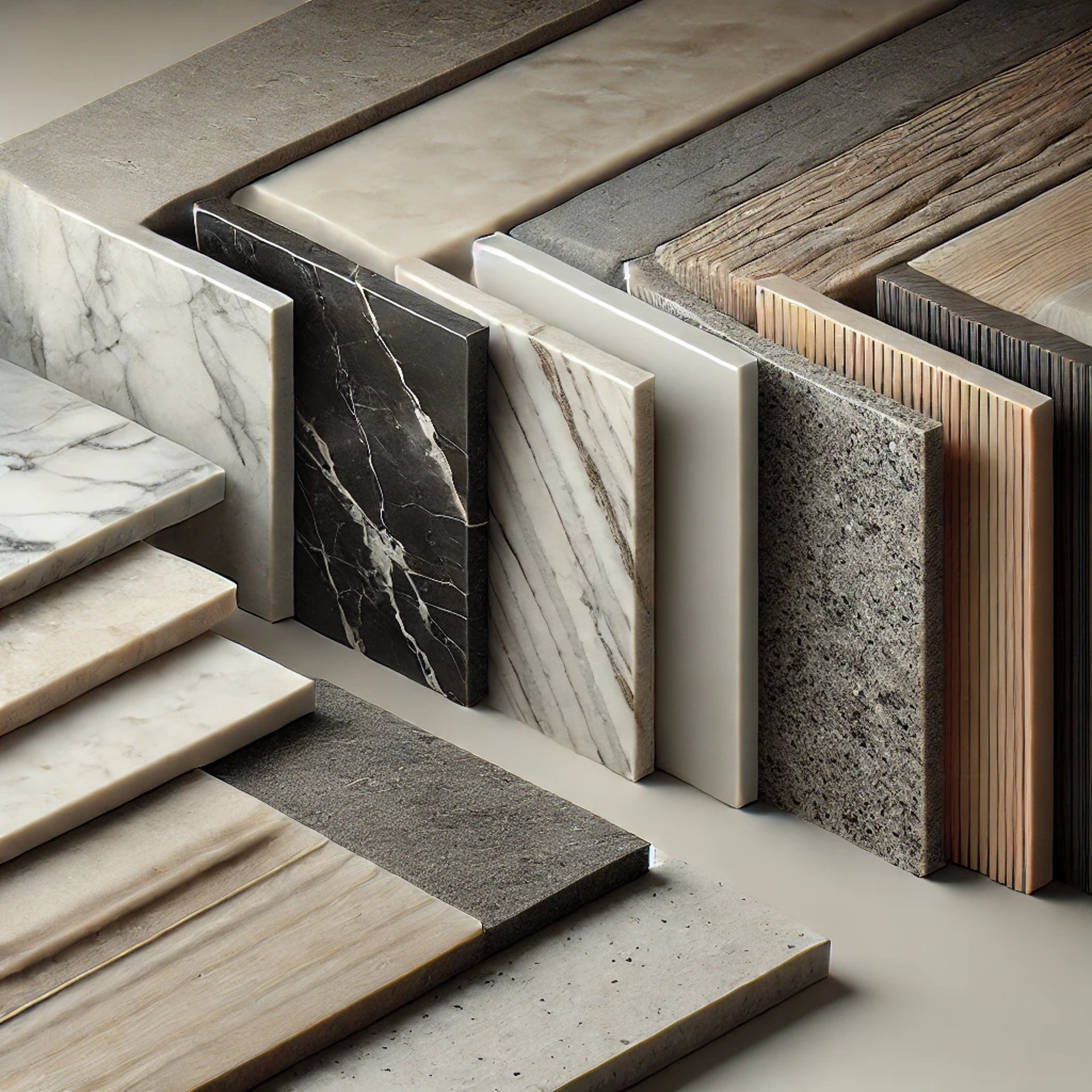
BENCHTOP MATERIAL REVIEW
12/11/2024
Benchtop Material
GENERAL
12/7/202411 min read
This is where it all starts
Do you believe me when I say this is the post that starts it all?
I was working on a hotel development project and needed to review kitchen benchtop materials with my team. The knowledge I gained throughout these sessions completely blew my mind. I became so excited about benchtop materials that I couldn’t stop talking about them. Whether on the phone with my friends or family, every conversation somehow circled back to kitchen benchtops.
I could see them losing patience and interest listening to my endless ramblings about benchtop materials. So, I thought to myself, “Well, why not create a space where I can talk about random things I discovered like benchtop materials?".
And here we are! It’s been a journey, but I’m absolutely thrilled to finally share what got me so excited, what motivated me, and what truly started it all. I hope this gives you a fresh perspective on kitchen benchtops and a deeper appreciation for the thought that goes into their design, procurement, construction, and maintenance.
Quick Note: I’ve kept this post as neutral and impartial as possible. There’s no sponsorship or brand reference here—choosing the right benchtop truly depends on your needs and the nature of your project.
Now, let’s dive in and start this rambling talk!
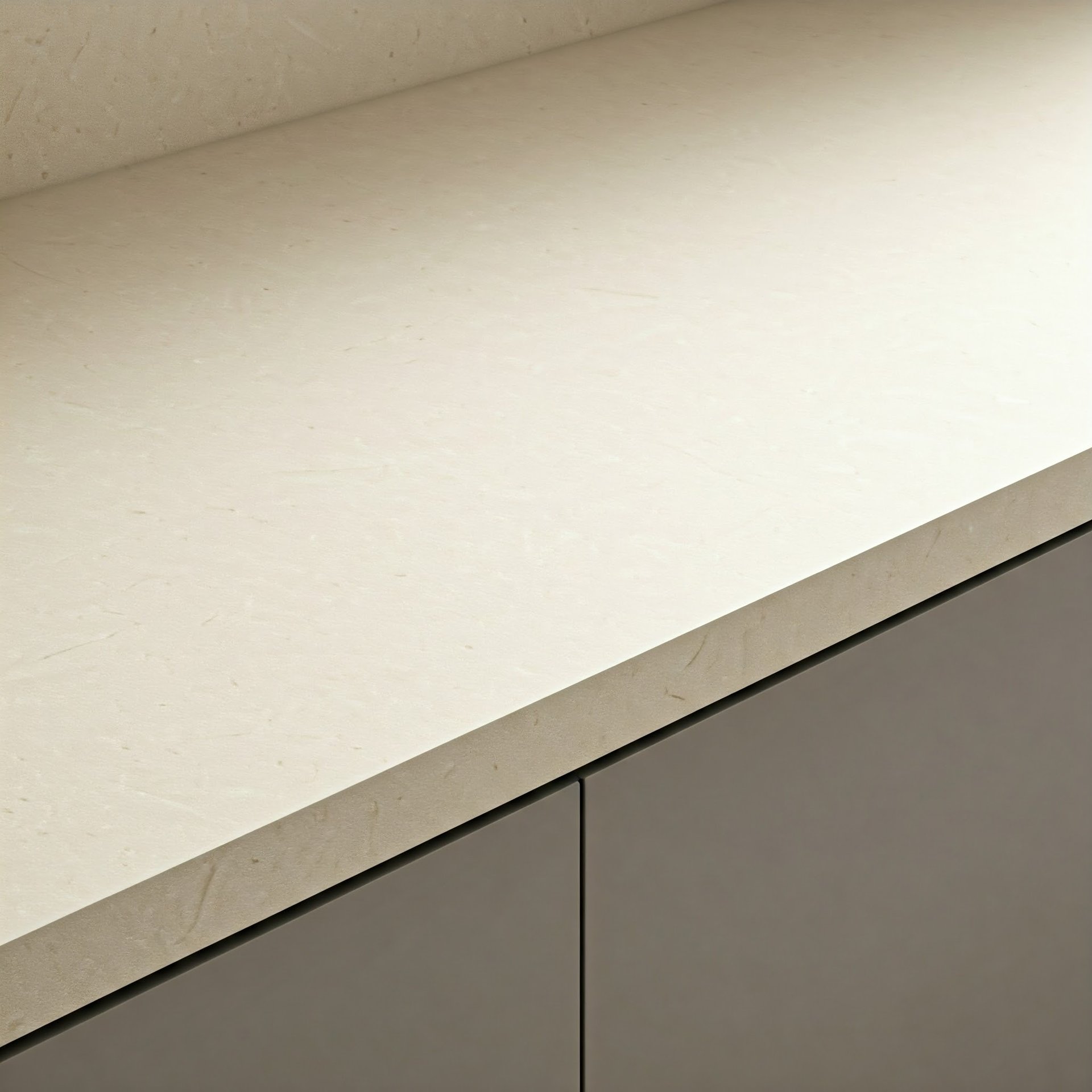
Engineered Stone
~The Banned Choice~
What is Engineered Stone Made Of?
Engineered stone is a man-made composite material designed to replicate the look of natural stone while offering superior durability and consistency. It’s a popular choice for benchtops, flooring, and other interior applications. Here’s a closer look at its composition and why it stands out.
Engineered stone combines several key elements:
Natural Quartz Crystals: Making up 90–95% of the material, quartz is one of Earth’s most abundant minerals. Crushed quartz is blended with other components to form the stone.
Resins and Polymers: These act as binding agents, creating a non-porous and cohesive surface.
Pigments: Used to add color and create a variety of designs.
Engineered stone has the highest silica content (up to 95%) among all kitchen benchtop materials, and I’ll elaborate on this further below.
What are the Advantages of Engineered Stone?
Engineered stone has become a go-to material for designers, developers, builders, and operators due to its impressive features:
Durability: Resists scratches, stains, and impacts. Minimal risks of cracking when cutting out.
Non-Porous: Does not absorb liquids, making it hygienic and easy to clean.
Consistent Appearance: Provides uniform colors and patterns, unlike natural stone.
Low Maintenance: Requires no sealing as it's non-porous, unlike materials such as marble or granite.
Design Flexibility: Available in a range of colors, patterns, and edge designs, offering endless possibilities for customisation for designers.
Warranty: Due to its durability, some suppliers offer life time warranty or extended warranty for engineered stone, which increase its popularity.
This combination of functionality, durability, and aesthetics explains why engineered stone is such a popular choice in modern interiors. However, it’s essential to weigh its benefits against its drawbacks.
What are Considerations of Engineered Stone?
Silica Dust and Health Risks: Engineered stone contains a high percentage of crystalline silica (95%), which poses significant health hazards when inhaled as dust during cutting, grinding, or polishing. Exposure to silica dust has been linked to severe conditions such as silicosis, lung cancer, and other respiratory diseases.
In Australia, this has become a critical issue. The government has implemented strict regulations to protect workers and eliminate the risks associated with engineered stone. Link from Safework NSW is here.
From 1 July 2024, the manufacture, supply, and use of engineered stone benchtops, panels, and slabs will be banned nationwide.
From 1 January 2025, a ban on imported engineered stone products will be enforced to further deter their use.
This ban does not include porcelain or sintered products because they do not contain resin. Big engineered stone suppliers have introduced silicas free surface products or porcelain range as alternative to engineered stone. I'll go into both later.
Environmental Impact: Environmental Impact: Although engineered stone is highly durable, its production raises environmental concerns due to the substantial energy consumption and resource demands involved in quartz mining and manufacturing.
Heat and UV Susceptibility: While engineered stone is highly durable, it is not completely resistant to heat or UV exposure. Prolonged exposure to high temperatures or UV rays can lead to discoloration or cracking, making it essential to handle with care.
Conclusion
Engineered stone has become a popular choice for its durability, versatility, and aesthetic appeal. However, increasing concerns about its health risks and environmental impact have led to significant regulatory changes in Australia. By 2025, bans on its use and importation are set to transform the industry, driving a shift towards more sustainable and safer alternatives. While engineered stone is considered safe for end users, its health risks arise primarily during cutting processes, such as those required for sink or sanitary ware installations.
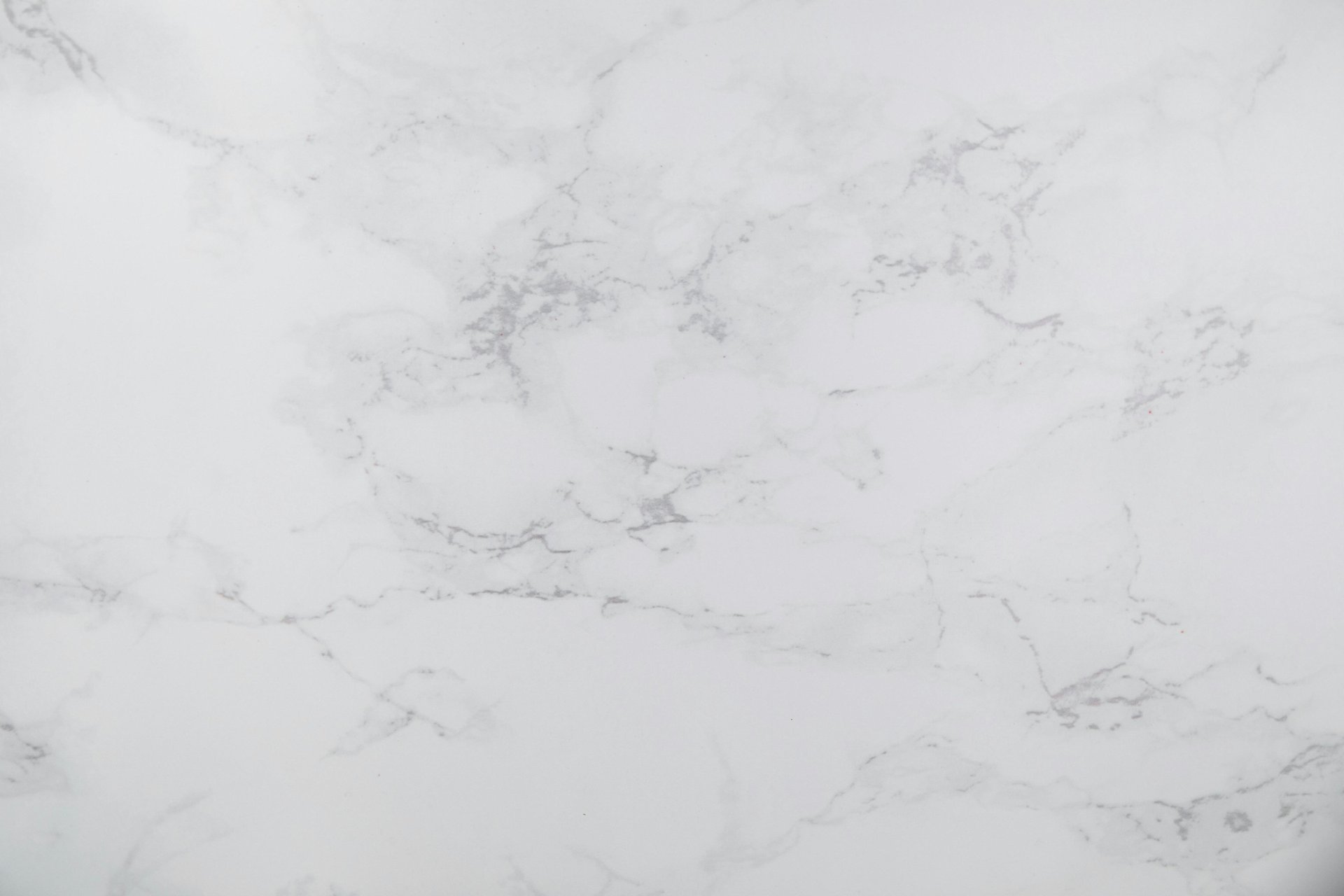
Silica Free Surface Stone
~The Alternative Choice~
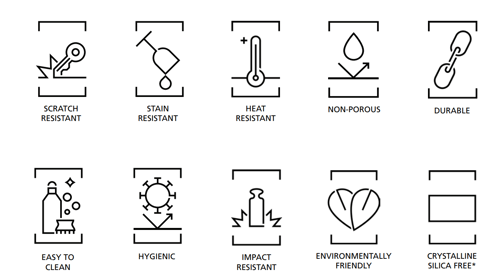

What are the Advantages of Silica Free Surface Stone?
Availability and Compliance: Based on current research, there are no bans on silica-free surface stone as of the date of this blog.
Performance: Silica free surface stone delivers outstanding performance, comparable to engineered stone, making it a strong alternative.
Lifetime Warranty: Thanks to its durability, many suppliers offer a lifetime warranty for this material.
Sustainability: Some suppliers state that the stone's composition includes a high percentage of recyclable materials, offering the potential to achieve high sustainability ratings for projects.
As mentioned above, silica free surface stone is introduced as an alternative for engineered stone.
What is Silica Free Surface Stone Made Of?
It's man-made composite products which is combined from a unique blend of distinctive minerals, recycled materials, and other innovative materials. Some suppliers market that they use minimum 80% of recyclable products.
What are Consideration about Silica Free Surface Stone?
Government responses: The term “silica-free surface stone” is quite specific and raises questions about the composition of the substrate. Currently, there are no bans or government statements about this material range. Suppliers have subjected it to extensive hazardous testing, suggesting it is compliant and safe for workers. Nevertheless, it's uncertain how government would respond to this product.
New Product Testing: Introduced this year, this material shows promise but requires time to assess its true quality and durability. While suppliers often offer extended or lifetime warranties, these come with restrictive terms. Its performance depends not only on material quality but also on proper handling at every stage—fabrication, transportation, storage, installation, use, maintenance, and disposal. Feedback from completed projects in the coming years will provide valuable insights into its long-term reliability.
Conclusion
For those seeking an alternative to engineered stone, the silica-free surface stone range offers an appealing option. However, it may take time to gain industry popularity and demonstrate its performance quality.
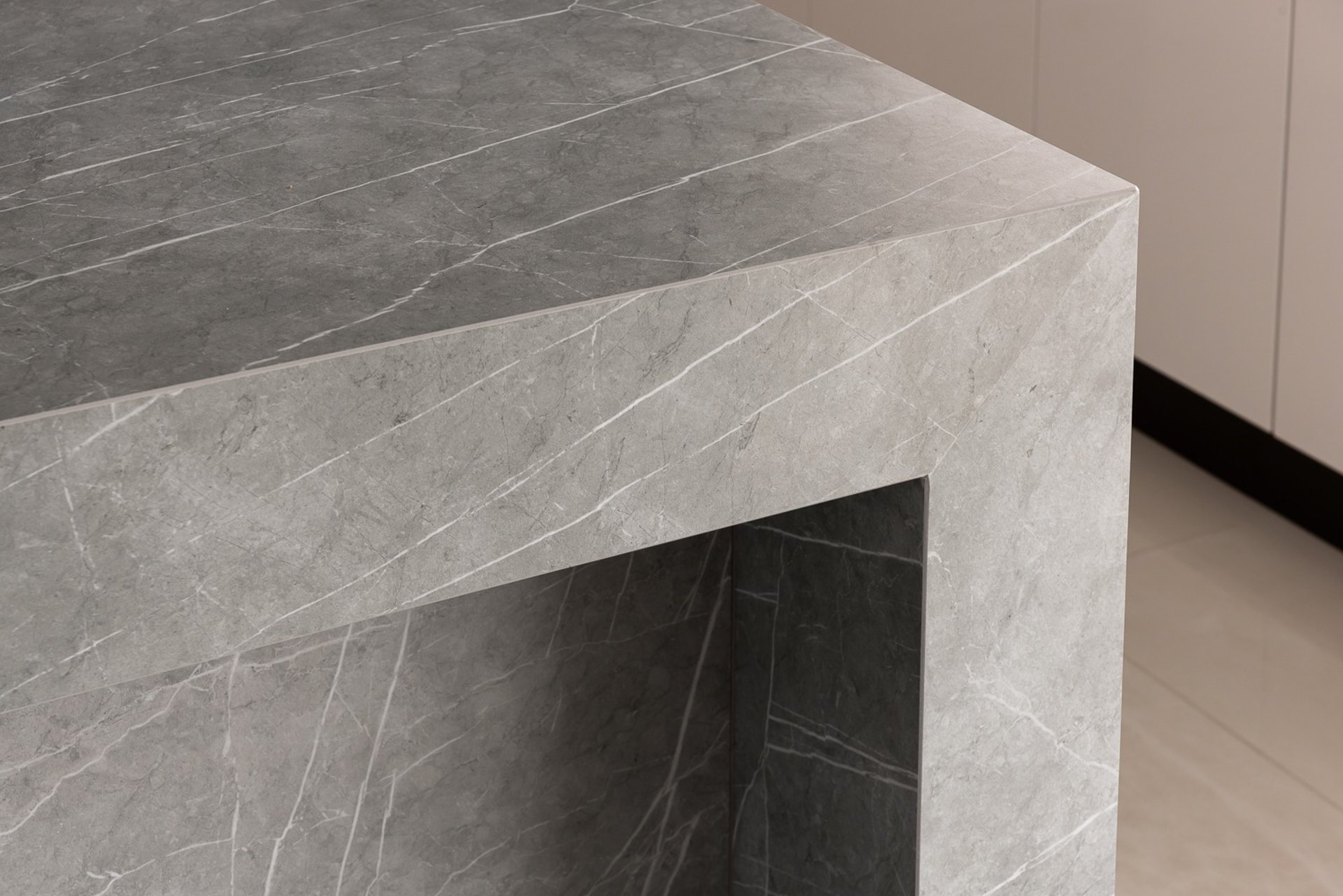
Porcelain Slab
~The Rising Choice~
Porcelain slabs have emerged as a revolutionary material in the world of design and construction, blending cutting-edge technology with timeless aesthetics. Renowned for their versatility and resilience, they are increasingly favored for benchtops, flooring, and wall cladding. Let’s explore what makes porcelain slabs unique and why they are a top choice for contemporary spaces.
What is a Porcelain Slab Made Of?
Porcelain slabs are created using high-pressure and high-temperature processes to form a dense, durable material. The typical composition includes:
Refined Clay: High-quality ceramic clay is the main ingredient, contributing to the slab's strength and smooth finish.
Mineral Oxides: Added to enhance color, durability, and UV resistance.
Natural Pigments: Used to achieve a wide range of colors and patterns, from minimalist tones to marble-like veining.
What are the Advantages of Porcelain Slabs?
Porcelain slabs have gained popularity among designers, builders, and homeowners due to their impressive qualities:
Durability: Highly resistant to scratches, stains, and impacts, making them ideal for heavy-use areas.
Heat and UV Resistance: Porcelain can withstand high temperatures without cracking or discoloring, making it a superior choice for benchtops and outdoor spaces, where other materials might show discoloration due to heat and UV exposure.
Non-Porous Surface: Impervious to water and liquids, ensuring hygiene and easy maintenance.
Versatile Designs: Available in a wide range of colors, finishes, and sizes, often mimicking natural materials like marble or granite.
Eco-Friendly: Despite requiring high energy during manufacturing, porcelain is recyclable and has a lower environmental impact than many other benchtop materials
What are the Considerations About Porcelain Slabs?
Weight and Durability: While porcelain slabs are lighter than engineered stone and real stone, making them easier to transport, they can also be more prone to cracking compared to the other types.
Design Limitations: Porcelain slabs have certain design constraints. For example:
The pattern options within a single porcelain slab size can be limited, often lacking the versatility or the refined elegance of natural marble. This becomes particularly noticeable when used over large areas, such as benchtops or splashbacks.
While some porcelain manufacturers have made significant advancements in creating marble-like patterns that closely resemble natural stone, these designs may repeat when multiple slabs are needed for larger spaces. As a result, the overall aesthetic can appear less dynamic, with the porcelain pattern often feeling "flat" compared to the depth and variation of real stone.


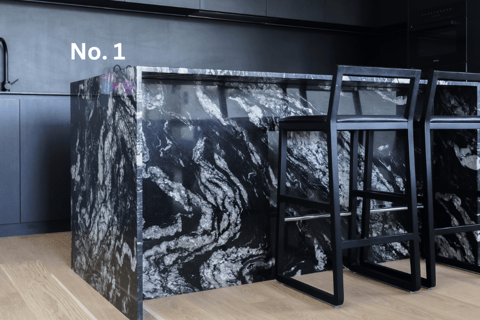

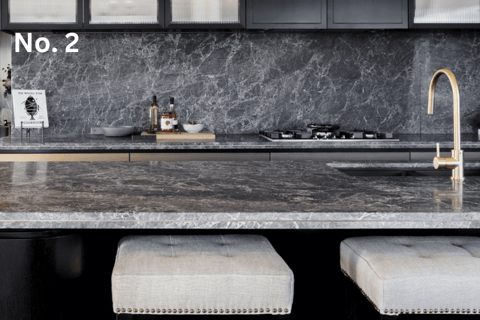

Q: Can you guess which is the porcelain slab and which is the real marble stone slab? The answer is hidden below—highlight the text to reveal it:
~ No 1 - Porcelain | No 2 - Marble ~
Porcelain slabs have limited edge design options, primarily due to the contrast between the surface finishes and substrate, which can cause visible discoloration along the edges, particularly with round designs like bullnose or lamb tongues (see images below). Mitred or aris edges provide a better solution but the line is generally thicker compared to engineered stone. This discoloration issue is also more pronounced with dark porcelain slabs, making them less flexible than lighter-colored options.
Some suppliers now provide surface finishes wrapping around the corner but it seems to be one direction only and the substrate colour still show to the other side if it's island bench design.


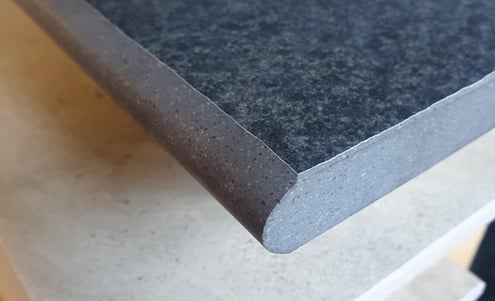

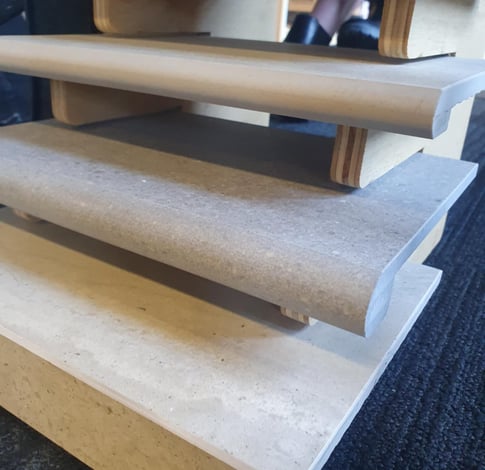

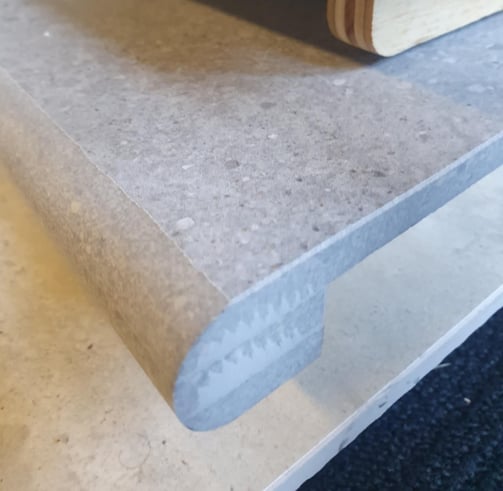


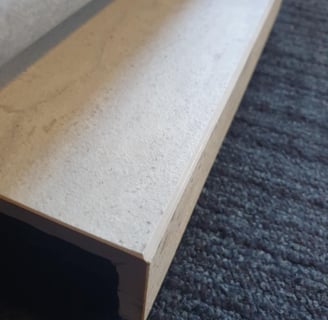
The texture of porcelain differs noticeably from marble or engineered stone. Some people describe it as having a "plastic-like", "flat" or less luxurious feel, which can create an unintended impression in certain settings.


Conclusion
Porcelain slabs are versatile and high-performing, making them suitable for a wide range of applications. However, their design constraints and particular aesthetic qualities make them more appropriate for certain types of projects, particularly where durability and functionality are prioritized over luxury finishes.
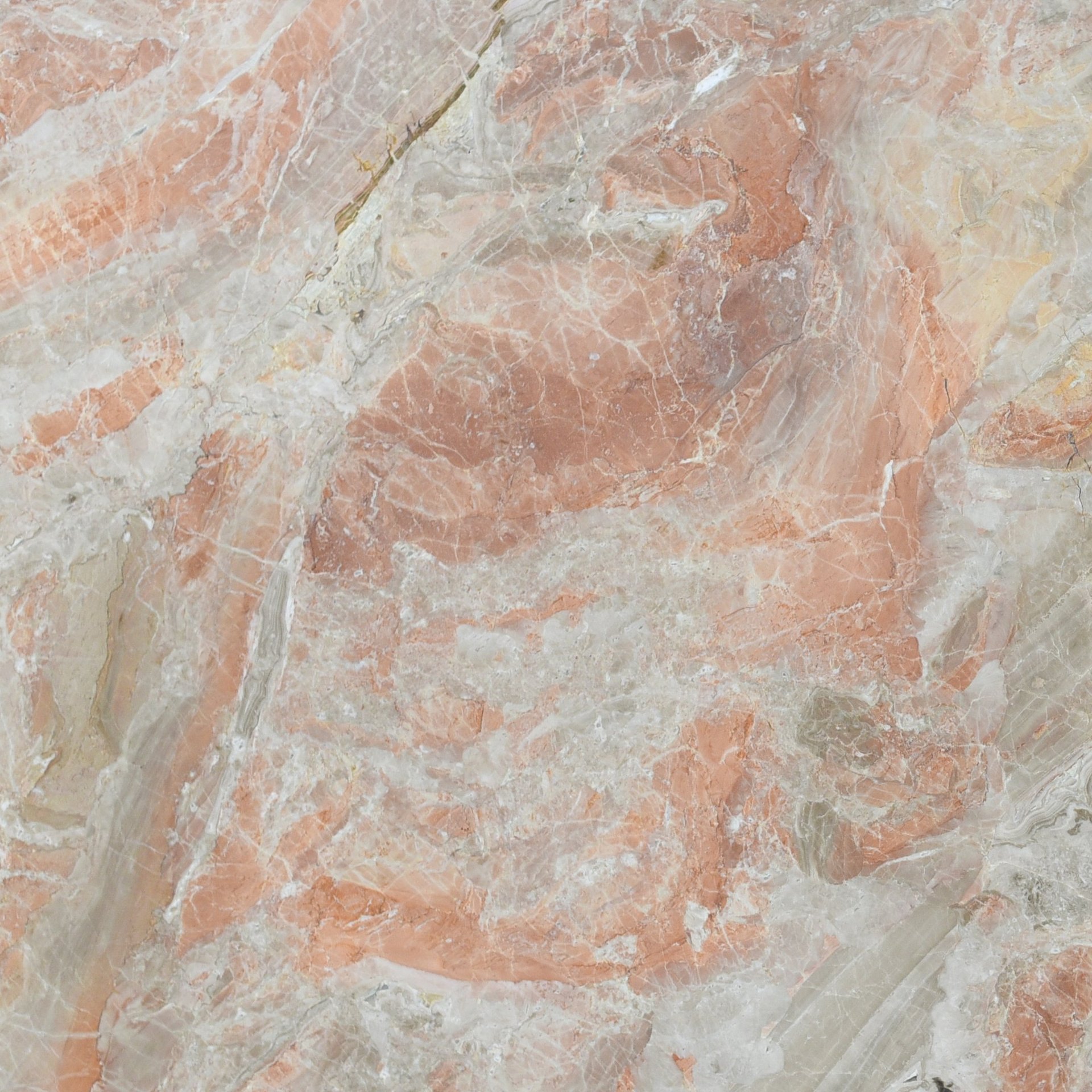
Natural Stone
~ The Grand Choice ~
Natural stone has been a symbol of luxury and durability for centuries, prized for its unique patterns and natural beauty. As a material for benchtops, flooring, and walls, it offers unmatched character and sophistication. However, its allure comes with its own set of challenges. Let’s delve into what makes natural stone a sought-after choice and the factors to consider when using it in your projects. Fun fact that in Asia, stone represent prosperity and luxury so if you house have many stones, it represents your wealth and status.
What is Natural Stone?
Natural stone refers to materials quarried directly from the Earth, with each slab a one-of-a-kind creation of nature. Each type of stone boasts unique patterns, textures, and colors, making it ideal for creating distinctive interiors.
Common types of natural stone include:
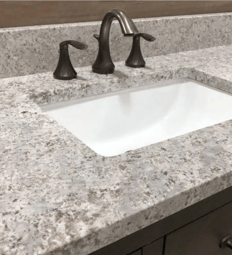

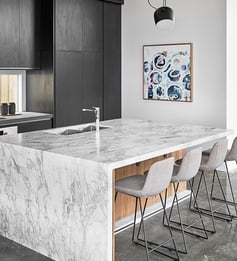

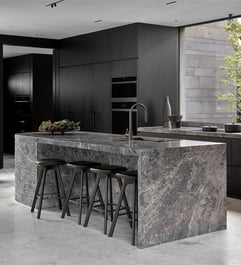

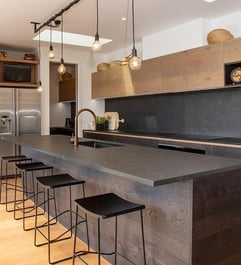

Granite - Renowned for its durability and speckled appearance.
Marble - Known for its luxurious veining and elegance.
Limestone - Offers a softer, earthy look with a matte finish.
Slate - Characterized by its layered texture and rich, dark tones.
Why is Natural Stone Popular?
Natural stone continues to be a favorite among designers and homeowners for its remarkable features:
Timeless Beauty: The natural patterns and veining create a sense of luxury and exclusivity.
High Density: Stones are the heaviest and more density than other materials. When properly maintained, it can last a long time.
Heat Resistance: Most natural stones are resistant to heat, making them ideal for kitchens.
Unique Character: No two slabs are identical, adding personality and authenticity to any space.
Design Edge flexibility: Stone has so many edging profile that designer can play around.
What are Consideration of Natural Stone?
Porosity and Maintenance: Many natural stones, especially marble and limestone, are porous and require regular sealing to prevent stains and moisture absorption (normally annually for heavy use areas). Sealant quality and impact to stone surface needs to be reviewed carefully ( normally stone supplier can recommend you the sealant products but you should check if this also impact the stone finishes). Cleaning products also need to be selected carefully for the stone products so you don't impact the sealant and stone surface. This is why I don't like this in the commercial content when heavy chemical is used.
Susceptibility to Damage: While durable, natural stone can be prone to scratches, chipping or cracking. This is important to note when you need to cut out in the stone slab. No stone manufacturer will want to guarante that they can cut it without cracking.
Cost: The extraction, transportation, and installation of natural stone make it one of the more expensive options for benchtops and flooring.
Environmental Impact: The quarrying process can disrupt ecosystems and consume significant energy, contributing to its environmental footprint.
Inconsistent Appearance: While unique patterns are a selling point, they can also pose challenges in achieving a uniform look, particularly for large projects. If you looking to procure the stone slabs for your project, it's recommended that you go to the factory to select and buy the slab to control patterns and get what you like.
Conclusion
While natural stone is eco-friendly due to its longevity and recyclability, its environmental impact lies in the extraction process. Efforts to source stone responsibly and invest in local materials can help mitigate these impacts.
Natural stone is synonymous with luxury and craftsmanship. Its timeless appeal and inherent durability make it a valuable addition to any interior or exterior space.
However, its cost, maintenance requirements, and environmental considerations mean it may not be suitable for everyone and every project. I believe that designers should consider the project types and uses before recommending stones to their clients, not just the pros but also cons to consider as I mention above.
Hi! 👋🏼 I'm delighted to welcome you to my little corner of the internet. This blog is my creative outlet and a space where I can share my thoughts, passions, and experiences with you.


Thank you
Thank you for reading! I hope I’ve covered the key aspects of these materials and haven’t missed anything important. If you notice any inaccuracies or have insights to share, please feel free to reach out to me.
Among all the materials discussed, which one is your favorite, and what are your thoughts? Ultimately, the right choice depends on your project requirements and personal needs, but it’s always important to carefully consider the cons and the potential impact of your decision.
Feel free to explore my blog for other topics that might interest you here.
Wish you an amazing day!
With love,


